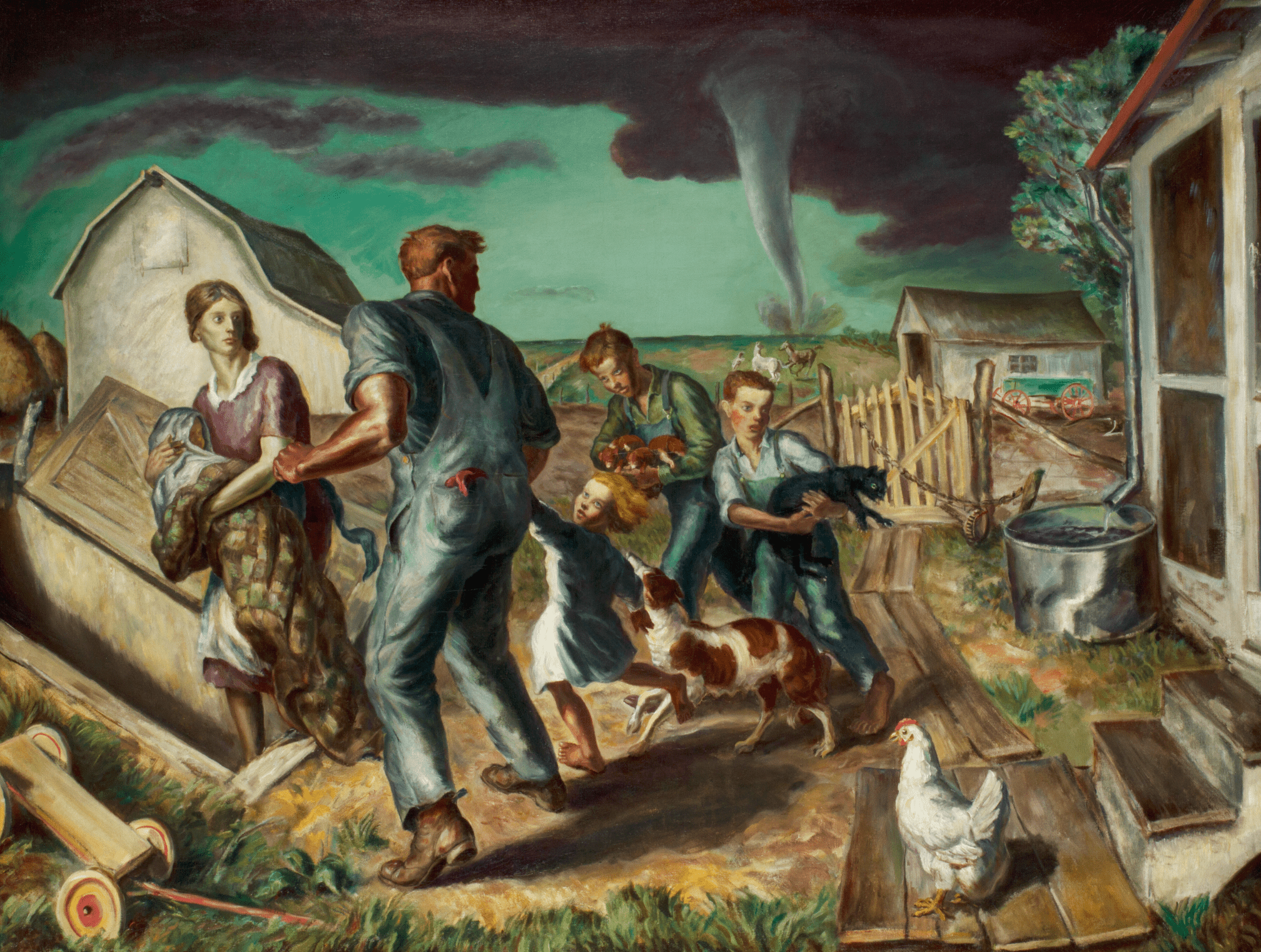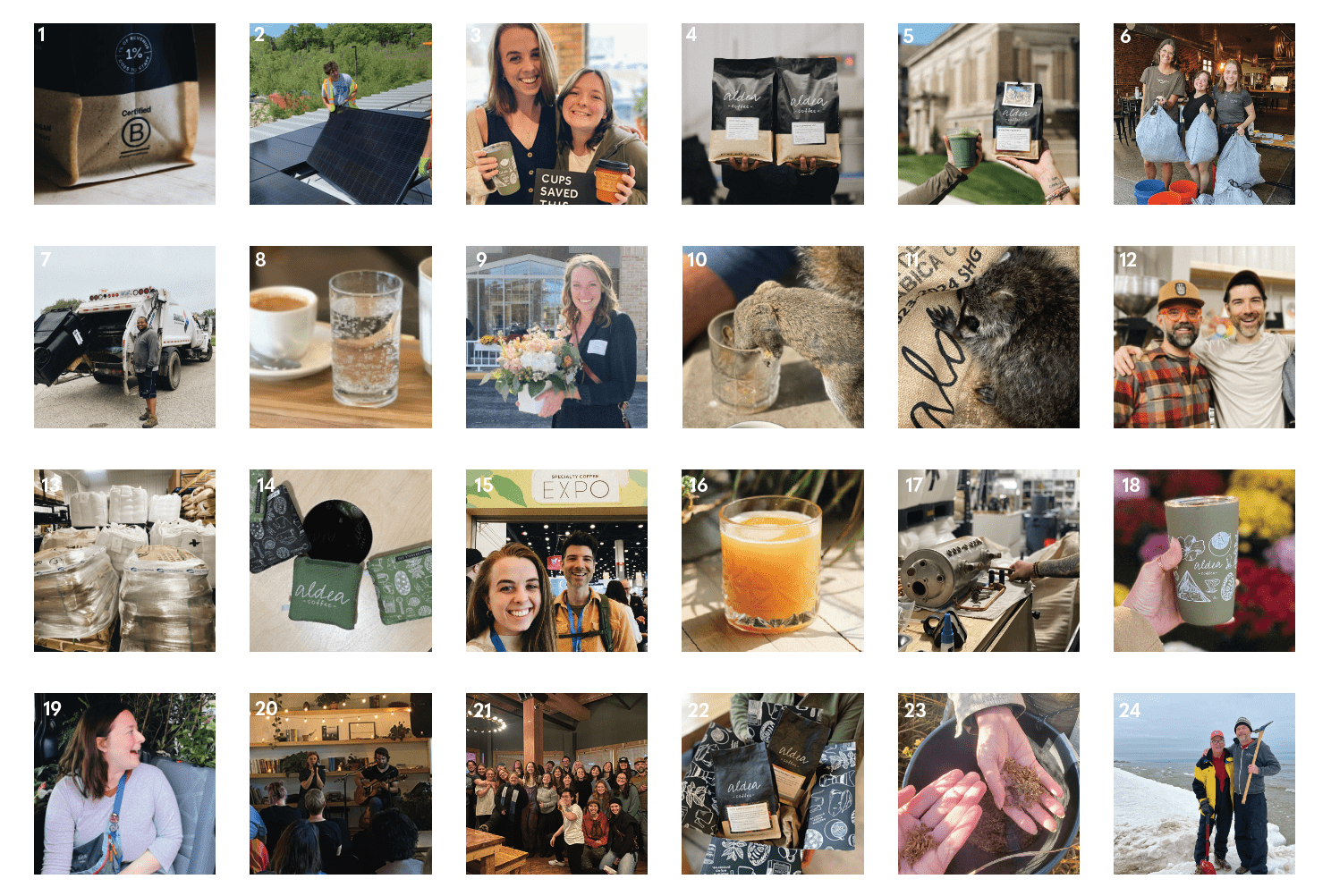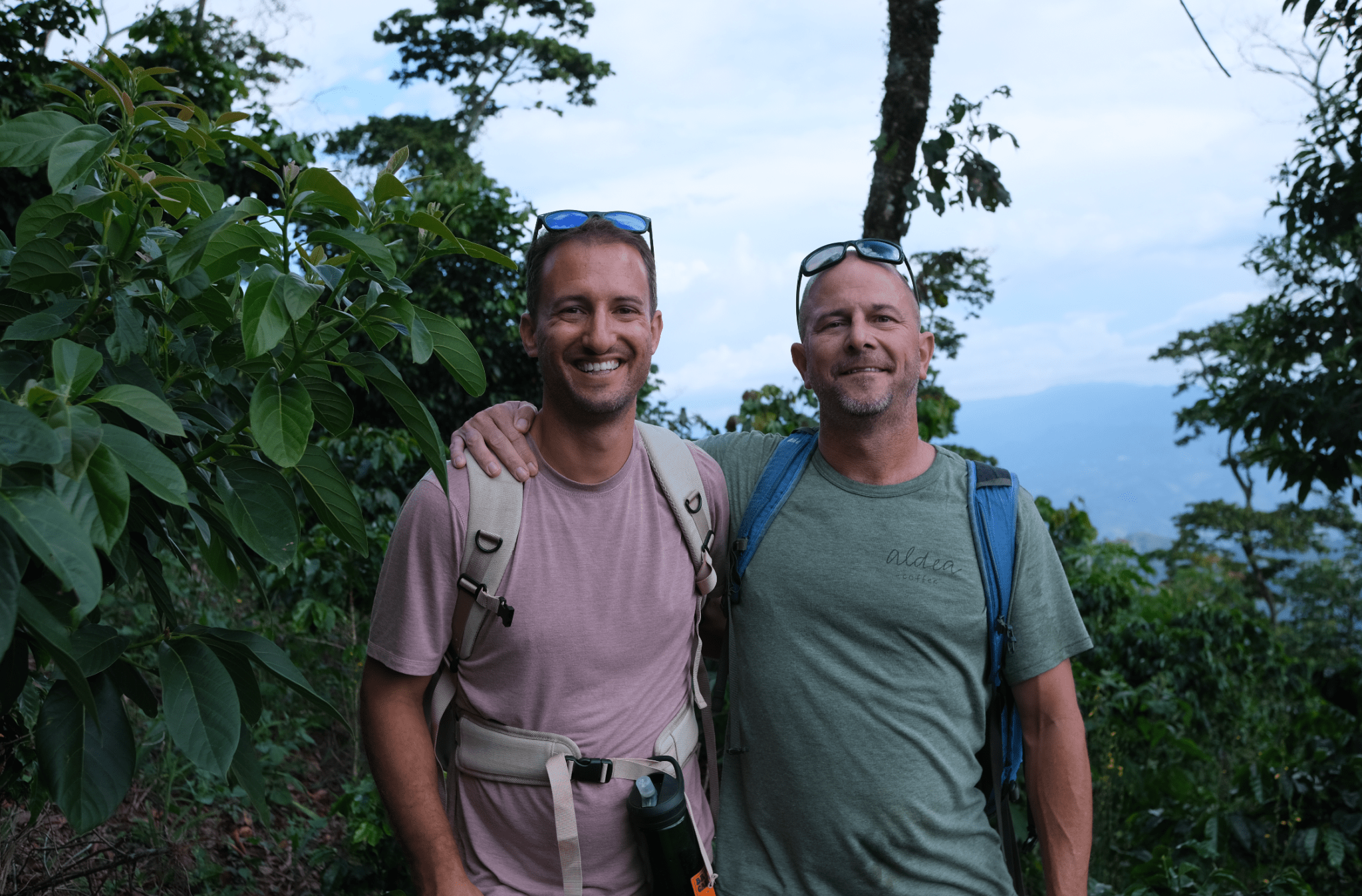
Overview
Would you rather read the newsletter in PDF Form?
Here's the link to view the PDF version.
Monthly Features
Filter (Drip)
Pour-Over

Coffee Fun Fact
Unlike a cookie hot from the oven, roasted coffee can actually be too fresh to enjoy. In fact, it is best to wait at least 24 – 48 hours after roast for a washed process coffee (like Alfredo Ponce’s coffee) and up to 4-7 days for a natural process coffee (like Servelio Sanchez’s coffee) before enjoying. The roasting process produces a fair amount of carbon dioxide (CO2) that is trapped in the bean while it caramelizes. This gas slowly releases (or degases) from the bean over timewhich is why coffee bags have a one-way release valve—to let CO2 out (so it doesn’t burst the bag) while also not letting oxygen in to avoid oxidation. The high levels of gas trapped in the bean fresh off a roast can displace brewing water, causing resistance in overall extraction, and ultimately producing an uneven and low extraction of the coffee solids in your brew. Thus, keep your eye out for the Roast Date on our coffee or any coffee you buy out there in the wild. If it was just roasted, give it a couple days. And if you’re using a natural process coffee (or wanting to use any coffee for espresso brewing) give it at least a week. It will be worth the wait!

Reflections From The Roastery
I love Spring, but boy does it fly. It felt like only yesterday that the gold haze of forsythia was lighting up the road on my way to work. Now it’s the gold slick of maple pollen and even the dogwoods and lilacs have all but retreated with this recent rain. Yet, rhododendrons and sparks of white trillium are appearing in the woods and before you can say sunflower, their big, yellow blooms will be leaning into the halls of the farmers market soon enough. Spring flowers are fleetfooted and temporary and all the more beautiful for it.
We are accustomed to things like flowers and visits from birds like orioles being temporary, but it’s often overlooked that coffee, too, is a fleeting product of nature: a seed (aka bean) born offragrant white flowers that become a red or yellow fruit, resembling, and are so called, cherries,that harbor two seeds per fruit, harvested and available only once a year. So, when you see a microlot coffee on our shelf, like Marlon Carcamo or Alfredo Ponce’s, all those beans are harvested from a finite, yearly source, and there’s something beautiful about that too. Luckily for us, we commit to supporting the same producers of these great coffees every year. Thus, when we inevitably run out of Marlon’s coffee, say, know it will only be a short while before the next harvest arrives again.
Speaking of which, guess what’s on its way? Yep! The 2024 harvest of Honduran coffees are only a few weeks from hitting the water and heading our way. Photos of the process have been circulating the WhatsApp channels: large, colorful sacks of parchment (coffee beans in need of hulling) weighing down truck beds and coffee samples being cupped by the team in Santa Rosa. It’s no small feat to harvest, process, and transport coffee in all its forms (I’m reminded of that everyday as I lift and drag the 150-pound jute sacks around the roastery), so it’s also that time of year I feel a wave of awe and gratitude coming on for our partners in Honduras. We’re busy preparing things on our end at the roastery to make sure the reception of these coffees is done with the utmost care. I’ll send a full report of their arrival sometime in July.
As you note the phenological changes of spring into summer, I have one more for you: consider that fresh coffee from Central America shortly follows the migratory arrival of Baltimore Oriolesto the Midwest—a bright, orange bird that may have spent time amongst the very same coffee flowers that will become a cup of Aldea coffee while they overwintered down and around Honduras. How neat is that?
June Releases & Runouts
Runouts
Walberto Castellanos
Sadly, we are nearing the end of this awesome lot. This was our first year serving Walberto’s exceptional coffee and it has built up a well-deserved following. If still available, get it while supplies last! I’m estimating that it will be gone from the shelves by early June. Sorry for the late notice.
Releases
Isaias Reyes
We’re excited to have Isaias Reyes’ coffee back in the mix. It’s another great crop this year with notes of toffee, pecan, and vanilla. I’m roasting it to a light-medium profile to balance out its inherent floral/citrus quality and further the sugar browning, hence the toffee. Isaias has been producing coffee since 1998 in the Puca Opalaca Mountains of Honduras, where he also owns and operates a coffee dry mill. He uses sustainable farming practices such as efficient wastewater (aka honey water produced by washed coffee processing) and coffee pulp management to protect his local watershed and neighboring ecosystems from excess nutrient pollution. Keep your eye out on the socials for the official launch date. ETA: June 7th, 2024.

above: Isaias Reyes in his coffee field.
Bayron Castellanos
A graduate of Aldea's specialty coffee processing training program in Honduras, this is the second season Bayron’s coffee is going on the shelf, and I’m stoked. This is a well-balanced, and accessible natural processed coffee for those who are new to fruit-forward coffees. Warm honey, ripe blackberry & a semi-sweet chocolate finish are highlights in this balanced natural. I’m roasting it light-medium to deepen its inherent sweetness. ETA: June 28th, 2024.

above: Bayron Castellanos (middle) and Aldea owners, Andrew Boyd (left) and Jeremy Miller (right).

Weathering The Storm Blend: Collaborating with Muskegon Museum of Art All Summer Long
In case you haven’t seen or heard, we have partnered with the Muskegon Museum of Art (MMA) to promote their summer exhibit, “John Steuart Curry: Weathering the Storm,” by creating a blend together. Using a fun and systematic method of coffee blending called “post-roast wet blending,” the MMA staff helped us find the perfect ratio of three different microlots from Honduras that became the Weathering the Storm Blend.
We all gathered around the cupping table at the roastery sometime when the snow was still falling and got a little jittery, trying four different coffees at various percentages. Each coffee was roasted to its optimal profile and then brewed and blended, almost rudimentarily by taking a spoonful of each brew at various ratios and stirring them up in a cup then tipping them back. This is “wet blending” and it’s a fun morning activity (or afternoon activity if you’re feeling adventurous). Try it sometime.
1:1:1 ratio of this and that and that. 2:2:1 of those. 2:1. 3:2:1. And when we finally tried Servelio, Walberto, and Marlon together, everyone got quiet.
Someone whispered, “Oh.”
Then, “Yep. Wow.”
Normally, we try to keep poker faces around the cupping table, but sometimes when blending, it’s fun to express yourself. The vote was unanimous. We found the Weathering the Storm Blend in less than an hour.
The result is fantastic: a rich and chocolatey base with balancing notes of toasted coconut and strawberries. One MMA staff member noticed the tasting notes of the blend are a near-perfectrepresentation of John Steuart Curry’s famous work that lives at the Muskegon Museum of Art, “Tornado Over Kansas”: the striking red and white highlights found in the hen, homes, handkerchief, and storm shelter mirrored in the coconut and strawberry of the blend.
If you haven’t had a chance to try it yet, get yourself a bag or try the collaboration blend on drip at either café throughout the summer. Bags will be available at the Muskegon Museum of Art as well. Shoutout to Elly Kuyt for the awesome bag and label design, and to the team at MMA for their support and partnership throughout the process!

About the Exhibition
Once you get your cup of Weathering the Storm or the tea-based feature of the same name at Aldea, go check out the exhibition in downtown Muskegon. The exhibit, running May 23 – September 2, showcases artwork by “one of America’s most influential artists”—19th century Midwest painter, John Steuart Curry.
Curry’s work was influential in the national perception of the Midwest with his imagery of pastoral landscapes and most famously, natural disasters like tornados as popularized by media in the 1920s. According to MMA, the exhibition “will bring together Curry’s masterworks under one roof for the first time in two decades.”
We love our local art museum and are very excited to collaborate with them for this event. Go check it out! And while you’re at it, both Pigeon Hill Brewery and Wonderland Distillery are running specials for the exhibit as well. Sounds like a pretty fun day out to me. See you out there.

Stepping Up Sustainability at Aldea: Going Solar and Commercial Composting at the Roastery
Environmental sustainability is in the very fabric of Aldea Coffee. It’s part of every decision we will make and have made: every investment, every purchase, every product, every commitment. We became a B Corp in 2020 to further this commitment and find ways to improve our stewardship of our environment, locally and beyond. In that light, I have some exciting news.
Going Solar
That’s right. Aldea Coffee is going solar.
As of the writing of this article, there are workers from Chart House Energy, a local solar energy company, stomping around above me, fastening photovoltaic panels to our roof. It’s all buzzes, bumps, whines of drills, and stirs of excitement around the roastery right now. There is some drone footage up on our Instagram if you want to see the progress. It’s awesome.
The Chart House team made quick work of the project, having the panels up and wired to the building in about five days’ time. However, the plan itself started a couple years ago with a grant proposal to the USDA’s Rural Energy for America Program or REAP. We secured a REAP grant sometime in the last year, helping us with the initial investment costs, and have been working closely with Chart House Energy to help realize our energy consumption goals as a company.
One of the leads on the solar project at Aldea, Brittany Goode, is excited to see the panels finally going up and is ready to see the positive impact they will have on our environmental footprint.
“Securing REAP funding aligns perfectly with our values and commitment to sustainability,” says Brittany, Operations Manager of Aldea Coffee. “We look forward to the long-term benefits this will bring to our company and the broader community of Muskegon.”
Once operational, the solar panels are projected to generate an estimated 82% of our energy needs, significantly reducing the roastery's reliance on non-renewable energy sources, while also reducing energy costs as our roof produces electricity for us so long as the sun is shining. Along with the consumption reduction, working with Chart House Energy also means that we are choosing Michigan and American-made products and local services whenever possible, which is their own commitment as well. High fives all around.

Commercial Composting for the Roastery
As we up our energy consumption game, we are also upping our waste management game as well.
We’ve been partnering with many great and gracious local farmers over the last nine years to compost as much of our waste as possible. And in some cases, we still do. However, with the increase in cold brew production, syrups, baked goods, etcetera at the warehouse, and the notable need for a commercial compost operation to properly breakdown some of our compostable products (like compostable plastics for instance), we needed a commercial composter, a much different process than your typical backyard pile.
We’re excited to say that we recently partnered with Organicycle, a local company that provides curbside composting services for business- and residential-use in the Grand Rapids and West Michigan area. They’ve been a joy to work with, and I can’t say enough about how amazing it is to have this service available in West Michigan.
Why Compost?
Although recycling plastics, metals, and paper products is a great step in the reduction of reusable materials going to a landfill, compostable materials—organic matter such as coffee grounds, vegetable and fruit scraps, grass clippings (nitrogen-rich material) and eggshells, leaves, and even paper napkins (carbon-rich material)—are also things that are best diverted from your local landfill. According to the USDA, 20-30% of our total waste that ends up in landfills in America is compostable.
Organic materials like those listed above and even compostable plastics you may get as to-go containers are all bad news for the environment if not properly disposed of. These materials need air, water, and specific bacterial life (aerobic bacteria) to breakdown properly. Without these elements—specifically, oxygen—they can take hundreds of years to breakdown (looking at you,compostable cups and utensils) and will produce methane all the while, a powerful greenhousegas that is an estimated 80% more harmful than C02 due to its molecular structure and heatretaining effect in the atmosphere.
The setting of a landfill, where waste is buried lasagna-style forever downward, is certainly not a place where aerobic (oxygen-loving) life happens. However, operations like Organicycle aregreat places for such waste to go because that’s what composting is all about: the proper breakdown of organic material with the help of water (if not raining), oxygen (turning pile with a pitch fork or big frontend loader (side note: chickens are also good at this, I found)), and therefore a healthy environment for the good guys: aerobic bacteria and decomposers like worms and hundreds of other microscopic friendlies that break down this stuff without producing methane and creating a rich soil amendment for farms and gardens instead.
If you want to learn more about Organicycle or are interested in using their commercial services for your own business, we recommend checking them out at organicycle.org. If you want to learn more about composting in general, check out this short article by the USDA here.
Thanks for reading.
Coffee on,



